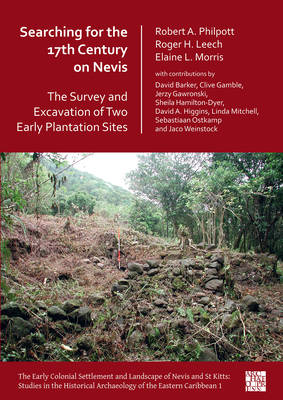
Je cadeautjes zeker op tijd in huis hebben voor de feestdagen? Kom langs in onze winkels en vind het perfecte geschenk!
- Afhalen na 1 uur in een winkel met voorraad
- Gratis thuislevering in België vanaf € 30
- Ruim aanbod met 7 miljoen producten
Je cadeautjes zeker op tijd in huis hebben voor de feestdagen? Kom langs in onze winkels en vind het perfecte geschenk!
- Afhalen na 1 uur in een winkel met voorraad
- Gratis thuislevering in België vanaf € 30
- Ruim aanbod met 7 miljoen producten
Zoeken
Searching for the 17th Century on Nevis
The Survey and Excavation of Two Early Plantation Sites
Robert Philpott, Roger Leech, Elaine Morris
€ 56,95
+ 113 punten
Omschrijving
Searching for the 17th Century on Nevis is the first of a series of monographs dedicated to the archaeological investigation of the landscape, buildings and artefacts of the Eastern Caribbean by the Nevis Heritage Project. This volume presents the results of documentary research and excavation on two sugar plantation sites on the island of Nevis. Upper Rawlins, located high on Nevis mountain, was occupied in the late 17th and early 18th century and abandoned early. Fenton Hill was occupied from the mid-17th to the mid-19th century and originated with an earthfast timber building, probably a dwelling house, later converted to a kitchen and encapsulated in stone about 1700. The adjacent main house was probably destroyed in the French raid of 1706 and rebuilt in timber. The final occupation was by Portuguese Madeiran labourers, who were introduced to fill a labour force shortage in the 1840s. Detailed reports on the finds assemblage include discussions of the handmade, bonfired Afro-Caribbean pottery made by enslaved African women, imported European ceramics and glass, clay tobacco pipes, metalwork and building materials. The dominance of imported goods from south-western England demonstrates the strong mercantile links between Nevis and Bristol, but local Nevis production of ceramics adds new insights into the estatebased ceramic production on European lines.
Specificaties
Betrokkenen
- Auteur(s):
- Uitgeverij:
Inhoud
- Aantal bladzijden:
- 238
- Taal:
- Engels
- Reeks:
Eigenschappen
- Productcode (EAN):
- 9781789698862
- Verschijningsdatum:
- 11/02/2021
- Uitvoering:
- Paperback
- Formaat:
- Trade paperback (VS)
- Afmetingen:
- 203 mm x 290 mm
- Gewicht:
- 847 g

Alleen bij Standaard Boekhandel
+ 113 punten op je klantenkaart van Standaard Boekhandel
Beoordelingen
We publiceren alleen reviews die voldoen aan de voorwaarden voor reviews. Bekijk onze voorwaarden voor reviews.









